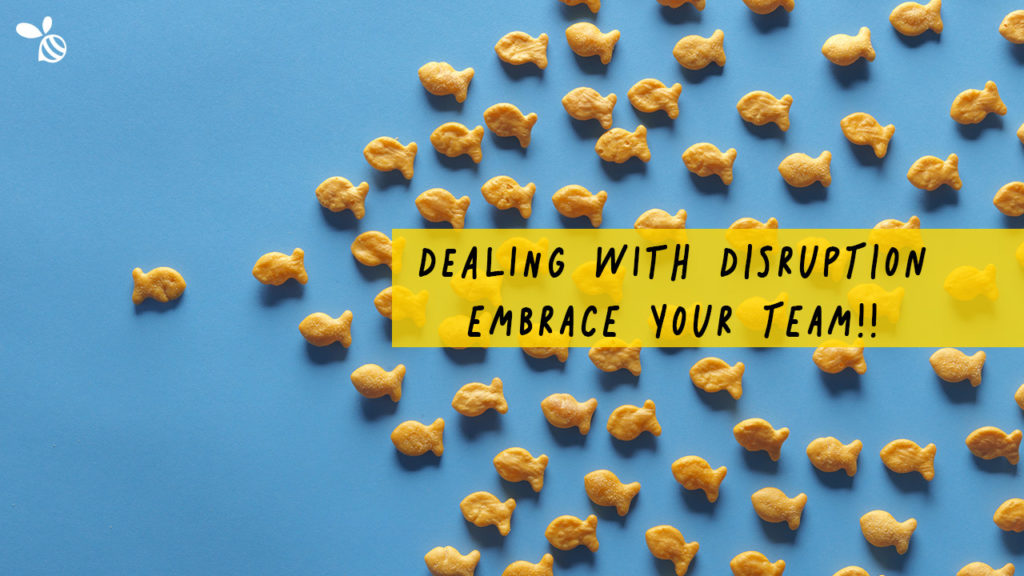
Disruption is one of those buzzwords that consumes a lot of our attention. And inevitably, whenever the conversation transitions to disruption it gets very big and complicated, very quickly. We talk about macro trends like blockchain, machine learning, artificial intelligence, and globalization — intellectual conversations on what will change our businesses and lives next.
These are interesting topics, but they miss the point. Disruptions aren’t macro; they’re practical!
Here’s how I define it: A disruption is when a person or company finds a better way to do something, and then everyone follows suit.
Uber, for instance, created a better way to hail a cab, and it set new expectations. According to the Taxi & Limousine Commission (TLC), in 2014 ridesharing accounted for 8% of the business travel ground transportation in New York City. By 2018 that was up to 75%!
Uber’s disruption to the taxi industry wasn’t technological, it was behavioral. It provided an easier and more logical way to connect passengers and drivers. (After trying the app, who wants to hang out on the side of the street to hail a cab?)
When a person or company finds a better way to do something it can reshape industry norms and conventions. That’s a disruption, and it is nothing new.
Disruptions have been a constant since the dawn of time. It started with the invention of the wheel, and humans have continued to evolve and invent ever since. What is new today is the pace of disruptions are increasing in volume and frequency. That’s our reality! We’re experiencing more shifts in industry conventions than ever before, and you and your team have to deal with it. Because if you don’t, your brand can quickly become irrelevant.
David Aaker writes in Brand Relevance, “Brands with high recognition and low recall are termed graveyard brands. These are brands that people have heard of but are so low on the relevance scale that they do not come to mind when considering a product.”
Look through the pages of history and you will see dozens of examples of popular brands knocked into the graveyard by a sudden shift: automobiles displaced buggy whips; smartphones displaced landlines; Amazon displaced independent book sellers. Sure there are stragglers and exemplars left in each category, but those industries have fractured and changed dramatically due to disruptions.
That’s the scary part: When an industry shifts, and your brand is on the wrong side, you can get pushed towards the graveyard. That can seem a little dramatic, but these are the stakes we are up against with our brands.
The sad part, at least for me, is how companies are coping with disruption. You’d think the pace of change would bring forward a golden era of innovation inside organizations. Now’s the time to be creative and look for bold new ideas. But it’s not happening.
More and more, companies are looking externally for ideas, especially in branding and marketing. Companies engage advertising agencies and consultants, because they believe someone else is “more creative.” I disagree!
Inside every organization is a vast source of untapped creative potential. I demonstrate this in my new book, Brand New Name. You are creative. Your team is creative. But most of that talent remains untapped because we’re too busy doing our jobs.
But a shift in mindset can transform an organization: Nobody knows your business and industry better than you, and you have the raw talent that you need to innovate.
All great brands are built by people — smart, ambitious, creative people. The operative word here is “creative.” In a world of rapid change, the best way to deal with change and uncertainty is to harness your ability to create and act on new ideas. This is why we are in a golden era of innovation. The companies that can harness the creative talents of their employees have a clear opportunity to outperform their peers. You don’t buy ideas; you create them.
Disruption is a constant, and it’s better to assume your business will face one sooner or later. When you notice it happening, pause and look within. Ask yourself, “How can I unlock the creative genius of my team to grow our brand?”
You’re reading How Effective Organizations Manage a Disruption by Jeremy Miller, originally posted on Sticky Branding. Did you enjoy this article? If so, sign-up for more of Jeremy’s articles at Sticky Branding.
from Tumblr https://joejstrickl.tumblr.com/post/188673329557
via IFTTT
No comments:
Post a Comment